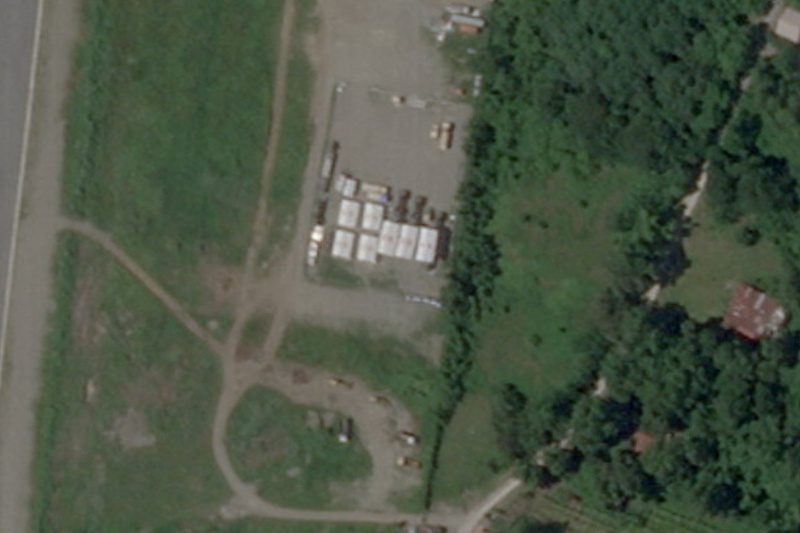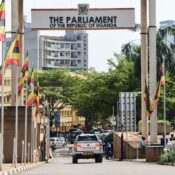
US keeps missile system in Philippines as tensions with China rise
Sources familiar with the situation say that the US has no plans to remove a mid-range missile system from the Philippines right away, even though China wants them to. Instead, the US is testing whether or not the system could be used in a regional war.
The Typhon system, which can be armed with cruise missiles that can hit Chinese targets, was brought in for joint drills earlier this year and has stayed there since.
As Taiwan’s southern neighbor, the Southeast Asian archipelago is a key part of U.S. policy in Asia and would be an important place for the military to prepare to help Taipei if China attacked.
Russia and China have spoken out against the first deployment of the system to the Indo-Pacific, saying that Washington is making an arms race worse.
It was a very scary plan for China’s foreign ministry to say on Thursday that they were very worried about.
At a press conference, Lin Jian, a spokesperson for the ministry, said, “It seriously threatens the security of regional countries and escalates geopolitical conflict.”
The deployment includes some details that have not been made public before. It happens at a time when China and the Philippines, a country that is part of the U.S. military treaty, are fighting over parts of the disputed South China Sea. In the last few months, there have been a number of naval and air battles in the vital waterway.
Filipino and U.S. troops continued to train with the missile system, which is on the northern island of Luzon, close to the Taiwan Strait and facing the South China Sea, sources in the Philippines said. They said they didn’t know of any plans to return it right away, even though the joint exercises are ending this month.
The Philippine army’s Colonel Louie Dema-ala told Reuters on Wednesday that training was still going on and that the US Army Pacific (USARPAC) would decide how long the missile system would stay.
The Philippine army said the Typhon could stay past September, and troops trained with it as recently as last week. A public affairs officer for USARPAC said that the army was “discussing how to use the system, with a focus on integrating host nation support.”
A top official in the Philippine government and someone else who knows about the situation said that the US and the Philippines were trying the system to see if it could be used in a conflict situation and to see how well it works in that setting. Each person spoke on the condition of privacy.
Officials from the government said that the Typhon, which can be moved around as needed, was in the Philippines to “test the feasibility of deploying it in country so that when the need arises, it could easily be deployed here.”
When asked for a comment, the office of Philippine President Ferdinand Marcos Jr. did not reply.
“NO Sleep Nights”
The U.S. army flew the Typhon to the Philippines in April. It has a range of more than 1,600 km (994 miles) and can fire missiles like SM-6s and Tomahawks. The army called it a “historic first” and a “significant step in our partnership with the Philippines.”
Reuters looked at a picture taken by Planet Labs, a commercial satellite company, on Wednesday that showed the Typhon at the Laoag International Airport in the province of Ilocos Norte.
A top government source who spoke to Reuters said that there were no plans to take it back right away.
An official said, “If it is ever taken out, it will be because the goal has been met. It could be brought back in after all the repairs or construction have been completed.” The official also said that keeping the system to scare China away was good for the Philippines’ national security.
“We want to give them sleepless nights.”
ARMS AGAINST SHIPS
Reuters claimed that the US has been gathering different types of anti-ship weapons in Asia as it tries to catch up quickly in the Indo-Pacific missile race, where China has a big lead.
Government papers that list military purchases show that more than 800 SM-6 missiles will be bought in the next five years. The U.S. military has not said how many will be sent to the Indo-Pacific region. The papers showed that the United States already has several thousand Tomahawks.
Several times, China has spoken out against the Typhon deployment. In May, Wu Qian, a spokesman for China’s defense ministry, said that Manila and Washington had brought “huge risks of war into the region.”
Russian President Vladimir Putin said in June that his country would start making intermediate- and short-range nuclear-capable missiles again, citing the deployment as an example.
In July, Philippine Foreign Affairs Secretary Enrique Manalo told his Chinese counterpart that the missile system in the Philippines did not pose a threat to China and would not make the area less stable.
The US has said that China has fully militarized at least three of the islands it built in the South China Sea. China mostly claims these islands as its own, even though an arbitral decision in 2016 sided with the Philippines and gave them anti-ship and anti-aircraft missiles.
China says that the military bases it has in the Spratly Islands are only for defense and that it is free to do whatever it wants on its own land.
All Categories
Recent Posts
Tags
+13162306000
zoneyetu@yahoo.com



